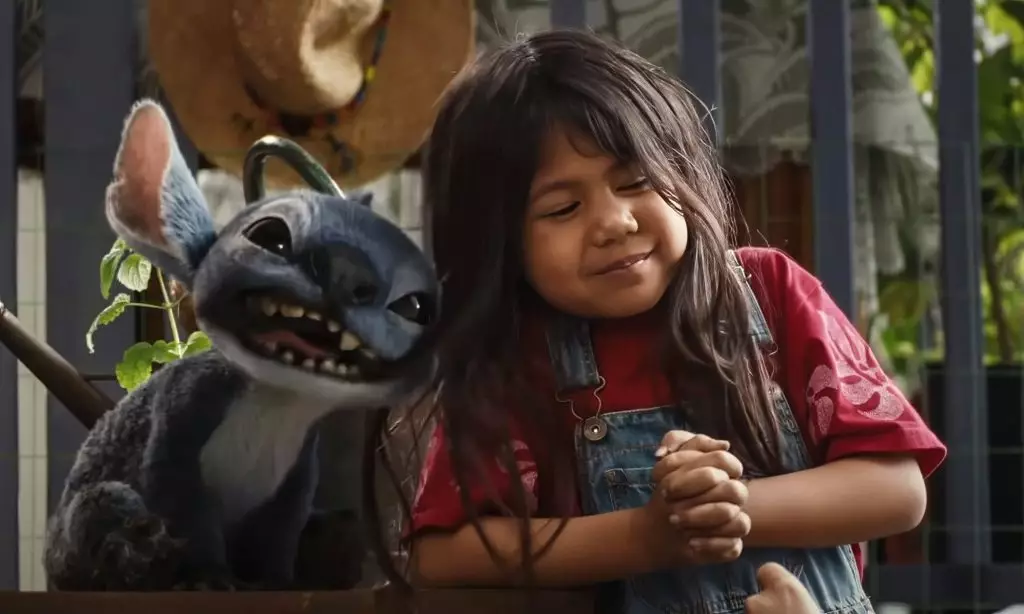Disney’s recent live-action adaptation of *Lilo & Stitch* has shattered multiple box office records, signaling a robust recovery for cinema in a post-pandemic era. With anticipated earnings of about $4.2 billion from U.S. and Canadian audiences alone, this film stands to ensconce itself as one of the top performers since COVID-19 afflicted the global entertainment landscape. The film, costing around $100 million to produce, has been supported by a vast array of merchandise and ancillary sales, allowing it to reach the crucial breakeven figure of $205 million worldwide, according to film finance analysts. At first glance, the overwhelming success seems to herald a golden age for Hollywood—a resurrection of audience enthusiasm after years of decline.
However, beyond the radiant figures and celebratory articles, one must examine the implications of such a blockbuster. The figures are undeniably impressive, yet they highlight a worrying trend: the reliance on tried-and-tested franchises at the cost of new, innovative storytelling. What does it say about our culture when a film gains acclaim largely because it is a revival of nostalgia?
Record-Breaking Weekends: What Lies Beneath
This year’s Memorial Day weekend saw *Lilo & Stitch* claim the title for the biggest four-day box office opening ever, with an impressive $182.6 million. This surpassed the previous record held by *Top Gun: Maverick.* It also secured the biggest opening for a director recently established within the industry, Dean Fleischer Camp, whose prior experience in the cinematic world hardly prepared audiences for the overwhelming success of this film.
Most notably, the movie achieved the largest opening for a PG-rated film in May, outpacing *Shrek the Third.* Yet, it’s critical to ponder the long-term ramifications of this trend. Disney’s strategic focus on pre-existing properties conjures images of monopolistic practices, effectively stifling originality and innovation. The film industry risks becoming a cycle of rehashing classics rather than fostering new voices and stories. This pattern is a double-edged sword: one that fortifies revenue streams yet potentially impoverishes cultural expression.
Younger Generations: Is Nostalgia Enough?
The fact that *Lilo & Stitch* outperformed expectations also raises questions about audience demographics. While the film draws heavily on nostalgia, how many of today’s younger filmgoers connect with a story first told in 2002? Disney’s strategy of tapping into the past may be profitable in the short term, but it also indicates a failure to embrace truly new narratives that resonate with the current generation’s experiences and challenges.
Moreover, although box office records can be indicative of financial success, they shouldn’t be the ultimate measure of a film’s worth. An impressive financial opening does not elevate the artistic merit or emotional depth of the work. The way *Lilo & Stitch* succeeded at the box office shows a palpable hitch in the fabric of modern storytelling—a need to familiarize audiences with the known instead of taking creative leaps into the unknown.
Theater Chains and Popcorn Sales: A Mixed Blessing
The surge of audiences returning to theaters—the highest attendance figures in several years—indicates a collective yearning for communal experiences. AMC and Odeon reported remarkable numbers, with 7 million attendees joining theater-goers across the country during this holiday weekend, while Regal saw record levels of engagement as well. Yet this spike in attendance begs further analysis.
What are we truly celebrating here? A return to popcorn-stuffed seats and shared laughter or a deeper, systemic reliance on corporate juggernauts like Disney to instigate large-scale cinema attendance? The implications extend beyond box office receipts; the larger question revolves around the value of experiencing real storytelling over transactional media experiences dominated by merchandise.
In this odd intersection of blockbuster pride and cautious skepticism, one can’t help but note that just because audiences are flocking back to theaters doesn’t mean they are being rewarded with the quality and originality that true art demands. As Disney triumphs in the marketplace, the dialogue surrounding the necessity for fresh narratives grows ever more urgent. In the end, let us not allow nostalgia to undermine our pursuit of innovation in the realm of storytelling.

